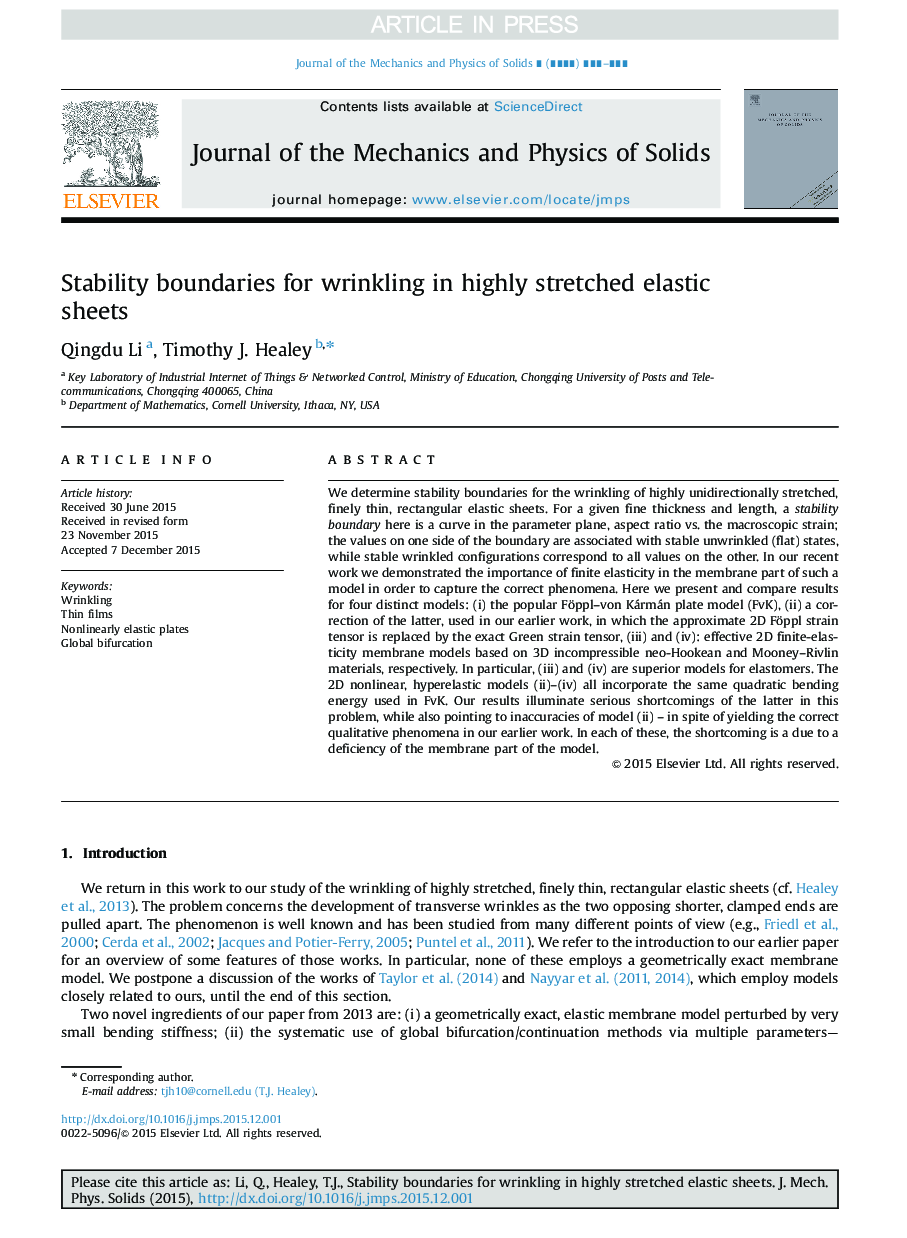| Article ID | Journal | Published Year | Pages | File Type |
|---|---|---|---|---|
| 5018337 | Journal of the Mechanics and Physics of Solids | 2016 | 15 Pages |
Abstract
We determine stability boundaries for the wrinkling of highly unidirectionally stretched, finely thin, rectangular elastic sheets. For a given fine thickness and length, a stability boundary here is a curve in the parameter plane, aspect ratio vs. the macroscopic strain; the values on one side of the boundary are associated with stable unwrinkled (flat) states, while stable wrinkled configurations correspond to all values on the other. In our recent work we demonstrated the importance of finite elasticity in the membrane part of such a model in order to capture the correct phenomena. Here we present and compare results for four distinct models: (i) the popular Föppl-von Kármán plate model (FvK), (ii) a correction of the latter, used in our earlier work, in which the approximate 2D Föppl strain tensor is replaced by the exact Green strain tensor, (iii) and (iv): effective 2D finite-elasticity membrane models based on 3D incompressible neo-Hookean and Mooney-Rivlin materials, respectively. In particular, (iii) and (iv) are superior models for elastomers. The 2D nonlinear, hyperelastic models (ii)-(iv) all incorporate the same quadratic bending energy used in FvK. Our results illuminate serious shortcomings of the latter in this problem, while also pointing to inaccuracies of model (ii) - in spite of yielding the correct qualitative phenomena in our earlier work. In each of these, the shortcoming is a due to a deficiency of the membrane part of the model.
Related Topics
Physical Sciences and Engineering
Engineering
Mechanical Engineering
Authors
Qingdu Li, Timothy J. Healey,
